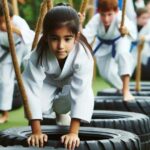Bringing nature into martial arts training with Outdoor Obstacle Courses
Table of Contents
Introduction
In the fast-paced digital age, where screens dominate our lives, there’s a growing need to reconnect with nature and break free from the confines of indoor spaces. This yearning for a more organic experience has led to a fascinating fusion – the marriage of martial arts and outdoor obstacle courses. This article explores the captivating realm of “Outdoor Obstacle Courses: Bringing Nature into Martial Arts,” delving into the benefits, challenges, and the unique experience these courses offer.
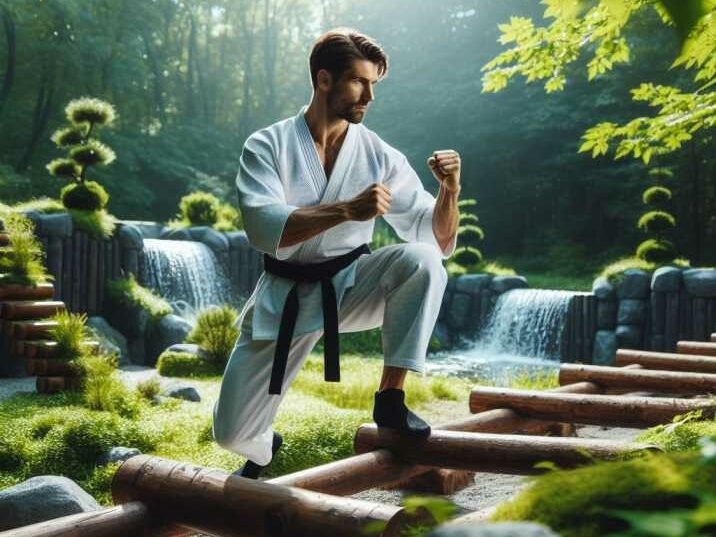
The Evolution of Martial Arts Training
Martial arts have transcended their traditional settings and evolved to cater to modern lifestyles. The serene ambiance of traditional dojos has given way to an exhilarating trend – outdoor obstacle courses. This shift provides practitioners with an immersive experience, blending the discipline of martial arts with the unpredictable challenges of the great outdoors.
Connecting with Nature
The allure of outdoor obstacle courses lies in their ability to bring martial arts enthusiasts closer to nature. Surrounded by the soothing whispers of the wind and the rustling of leaves, participants find themselves engaged in a harmonious dance between their bodies and the environment. This connection fosters a deeper appreciation for the natural world, adding a spiritual dimension to their martial arts journey.
Benefits of Outdoor Obstacle Courses in Martial Arts
Enhanced Physical Conditioning: The varied terrain and natural obstacles demand a diverse set of movements, promoting overall physical fitness. From climbing walls to navigating through mud pits, every challenge activates different muscle groups, enhancing strength, agility, and flexibility.
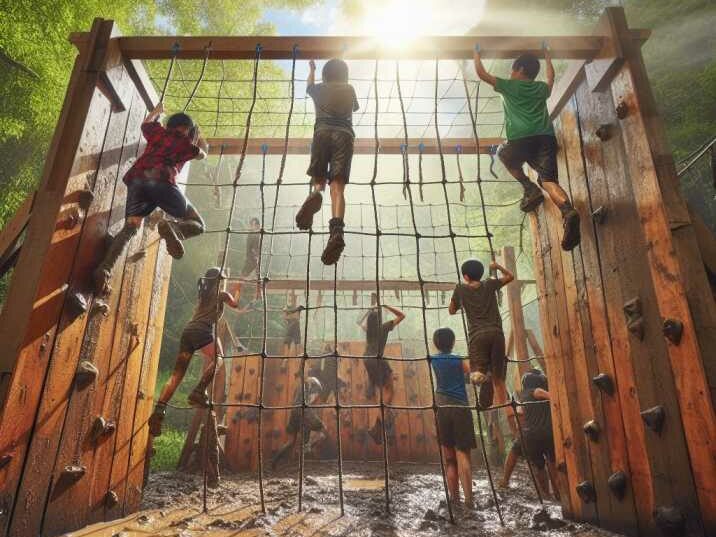
Mental Resilience: Confronting the unpredictability of outdoor courses cultivates mental toughness. Practitioners learn to adapt to changing environments, improving their ability to focus, make quick decisions, and remain composed under pressure – valuable skills not only in martial arts but also in everyday life.

Team Building and Camaraderie: Many outdoor courses are designed for group participation, fostering a sense of camaraderie among practitioners. Team-based challenges encourage communication, cooperation, and the development of a strong support system – qualities that are transferable to martial arts and beyond.
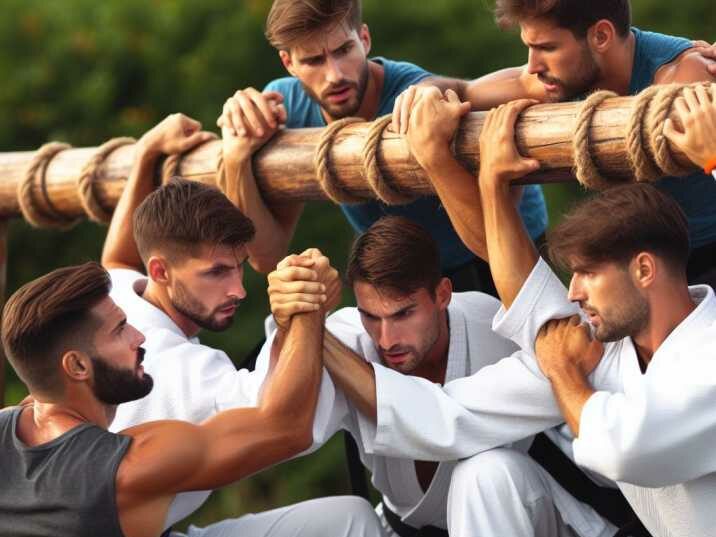
- Environmental Consciousness: Experiencing the beauty of nature firsthand instills a sense of responsibility towards the environment. Martial arts practitioners who engage in outdoor obstacle courses often become advocates for sustainability, promoting a holistic approach to personal well-being and the well-being of the planet.
Challenges of Outdoor Training
While the benefits are substantial, there are challenges associated with outdoor obstacle courses:
- Weather Variability: Outdoor training is susceptible to weather conditions. Rain, extreme heat, or cold can impact the feasibility of a session. However, adapting to these challenges can further strengthen the practitioner’s resilience.
- Terrain Limitations: Not all locations boast ideal terrains for outdoor obstacle courses. Accessibility and safety concerns may limit the availability of suitable training grounds.
- Equipment Logistics: Transporting equipment for outdoor courses can be cumbersome. However, many courses are designed with minimal equipment requirements, making them accessible to a broader audience.
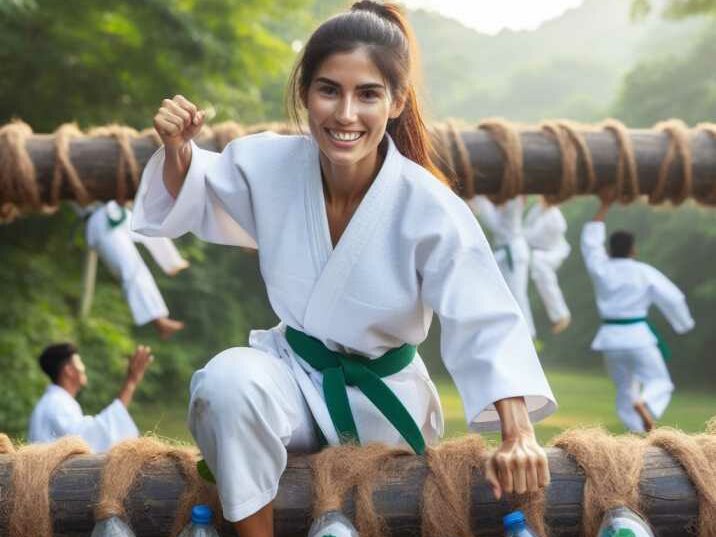
Conclusion
In conclusion, the marriage of martial arts and outdoor obstacle courses represents a transformative evolution in fitness and personal development. By embracing nature, practitioners not only enhance their physical and mental prowess but also foster a profound connection with the environment. The challenges posed by outdoor training are outweighed by the myriad benefits, making it a compelling option for those seeking a holistic and adventurous approach to martial arts. As the sun sets on traditional training spaces, a new dawn rises in the realm of outdoor obstacle courses, inviting enthusiasts to explore the untamed beauty of martial arts in nature’s embrace.
Frequently Asked Questions (FAQs)
- Q: What exactly are outdoor obstacle courses in the context of martial arts? A: Outdoor obstacle courses for martial arts involve integrating elements of the natural environment, such as climbing structures, mud pits, and varied terrains, into training sessions. These courses aim to enhance physical and mental conditioning while connecting practitioners with nature.
- Q: How do outdoor obstacle courses benefit martial arts practitioners? A: These courses promote enhanced physical fitness, mental resilience, team building, camaraderie, and environmental consciousness. The dynamic challenges presented by outdoor settings contribute to a holistic and transformative martial arts experience.
- Q: Are outdoor obstacle courses suitable for all skill levels in martial arts? A: Yes, many courses are designed with varying difficulty levels, allowing practitioners of all skill levels to participate. Beginners can start with less challenging obstacles and gradually progress to more advanced courses.
- Q: Can children participate in outdoor obstacle courses for martial arts? A: Absolutely. There are family-friendly courses that cater to children, encouraging them to develop physical and mental skills in a fun and adventurous setting.
- Q: What precautions should be taken in terms of safety during outdoor training? A: Safety is paramount. Participants should wear appropriate gear, and organizers should ensure that the course is well-maintained. Adequate supervision, proper warm-up, and clear instructions on navigating obstacles are essential.
- Q: How does outdoor training contribute to environmental consciousness? A: Experiencing nature firsthand often leads to a heightened awareness of environmental issues. Martial arts practitioners engaged in outdoor courses tend to become advocates for sustainability and responsible environmental practices.
- Q: Are there specific weather conditions that impact outdoor training? A: Yes, extreme weather conditions such as heavy rain, extreme heat, or cold can affect the feasibility of outdoor training. However, adapting to these challenges can further enhance mental resilience.
- Q: What type of equipment is typically used in outdoor obstacle courses for martial arts? A: Courses are often designed with minimal equipment requirements, focusing more on using the natural environment. Common elements include climbing structures, ropes, and balance-focused obstacles.
- Q: Can outdoor training replace traditional martial arts training entirely? A: While outdoor training offers unique benefits, it may not replace all aspects of traditional training. It can be an excellent complement, providing a refreshing and adventurous dimension to a martial arts routine.
- Q: Are there specific locations or terrains required for outdoor obstacle courses? A: Ideally, courses can be set up in various locations, including parks, forests, or even urban spaces. However, accessibility and safety considerations may limit the availability of suitable training grounds.
- Q: How do outdoor obstacle courses contribute to team building in martial arts? A: Many courses are designed for group participation, fostering teamwork, communication, and a sense of camaraderie among practitioners. Team-based challenges create a supportive and motivating environment.
- Q: Can individuals with physical limitations participate in outdoor obstacle courses? A: It depends on the specific course and its accessibility features. Some courses may be modified to accommodate individuals with physical limitations, but it’s essential to check with organizers to ensure a safe and inclusive experience.

